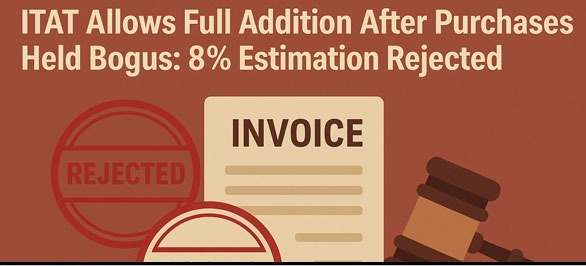Anita Chaudhary, J.@mdashThis appeal has been preferred by respondent Nos. 1 & 2 who have disputed the liability placed upon them vide award dated 10.10.2000 passed by the Motor Accident Claims Tribunal, Gurgaon. The factual matrix, the Union of India filed a claim petition u/s 166 of the Motor Vehicles Act seeking compensation for damage to the vehicles belonging to the Central Reserve Police Force. Both the vehicles owned by the Union of India were proceeding on Nuh-Ferozepur Jhirka Road on 30.04.1997 when a Tata 407 bearing registration No. RJ-29G-0139 owned by respondent No. 2, driven by Girraj respondent No. 1 (now appellant No. 1) hit Gypsy No. DL-09C-0548. Vehicle Tata 407 also hit the second Gypsy No. DL-09C-0547. Both the vehicles were damaged and suffered loss of Rs. 2,28,233/-.
2. Respondent Nos. 1 & 2 disputed its liability. The insurance company took the plea that the accident occurred on account of negligence of Rajinder Singh, one of the employees of petitioner and the facts had been distorted. It was also pleaded that the claim was exaggerated and it was a case of limited liability.
3. The Tribunal held that the accident had been caused by respondent No. 1 and the loss was only to the tune of Rs. 1,19,213/- but the liability of respondent No. 3 was only limited to the extent of Rs. 6,000/-. The remaining compensation was ordered to be paid by respondent Nos. 1 & 2.
4. Respondent Nos. 1 & 2 have disputed their liability on the premise that there was a comprehensive insurance policy, therefore, the entire amount was payable by the insurance company.
5. The contention of the appellants is that the provisions of Section 147(2)(b) of the Motor Vehicles Act are clear and after the amendment there would be no limit or restriction in the liability and since it was a comprehensive insurance policy, the insurance company would be liable for payment of the entire amount. Reliance was placed upon
6. As against it, the counsel representing the insurance company had urged that there was a restriction with respect to the liability in case of damage to any property of a third party and the limit had been placed at Rs. 6,000/- and we have to look into the terms of the policy and if additional premium had been paid and the limit had been increased then the insurance company would have to pay the increased amount as there was no contractual liability as in this case no additional premium had been paid. Referring to the policy, it was contended that the columns regarding payment of additional premium was lying blank and no additional premium had been paid.
7. The liability of the insurer is limited to the extent mentioned in the policy unless the insured can show that he had paid additional/higher premium or had got a higher risk covered in respect of a third party. The question would be whether in the absence of payment of additional premium, the insurance company''s liability would be unlimited in respect of third party or it is limited only to the statutory limit.
8. A perusal of the policy produced by the insurance company shows that there are blank columns in respect of additional premium and no amount has been mentioned against IMT 70 which refers to the increase in the limit of liability of property damage. It reads as under:-
IMT 70 Increase in the Limits of liability of property damage.-
In consideration of payment of additional premium Rs. ........it is hereby declared and agreed that the limit of liability u/s II-I(ii) of the police is increased from Rs. 6,000/- to Rs. ......only in respect of property other than property belonging to the insured or held in trust or in the custody or control of the insured.
It is further specifically understood and agreed that the increased limit does not apply to property carried in the vehicle hereby insured.
Subject otherwise to the terms, exception, conditions and limitations of this policy.
9. The counsel for the appellants has not disputed that the policy produced by the insurance company is different from what they are relying upon. It can be noticed that in the schedule of premium as mentioned In the policy certain amounts should have been mentioned though without any indication as to which entry it relates to. There are two columns, the first column relates to the own damage while the second column deals with liability. As against the additional amount for increased TP property damage limits no amount has been indicated and the column is lying blank. Even no amount has been added in the column against it. The schedule does not reflect which amount has been paid towards additional amount. However, it is clear that no amount has been added for the increased limit towards property damage.
10. On a careful analysis of the case law, it becomes clear that liability of the insurer depends upon the terms of the contract between the insured and the insurer contained in the policy. There is no prohibition for an insured to enter into a contract or insurance covering the risk wider than the minimum requirement of the statute.
11. The Constitution Bench of the Hon''ble Supreme Court in
12. The question is what is the effect of a comprehensive policy vis-�-vis the liability of the insurer in respect of third party risk regarding damage to property and whether the limit of liability would be unlimited only on account of entering into a comprehensive policy. The comprehensive policy only entities the owner to claim reimbursement and the entire amount of loss or damage suffered up to the estimated value of the vehicle which does not mean that the limit of liability with regard to third party risk would become unlimited or higher than the statutory limit. In the present case, there was a limit of liability up to the extent of Rs. 6,000/-. No additional premium had been paid to cover a higher amount and the insurance company had been able to prove their plea and they had established that there was a limit to the liability. There is no merit in the appeal. The appeal is dismissed. Lower court record be sent back.

